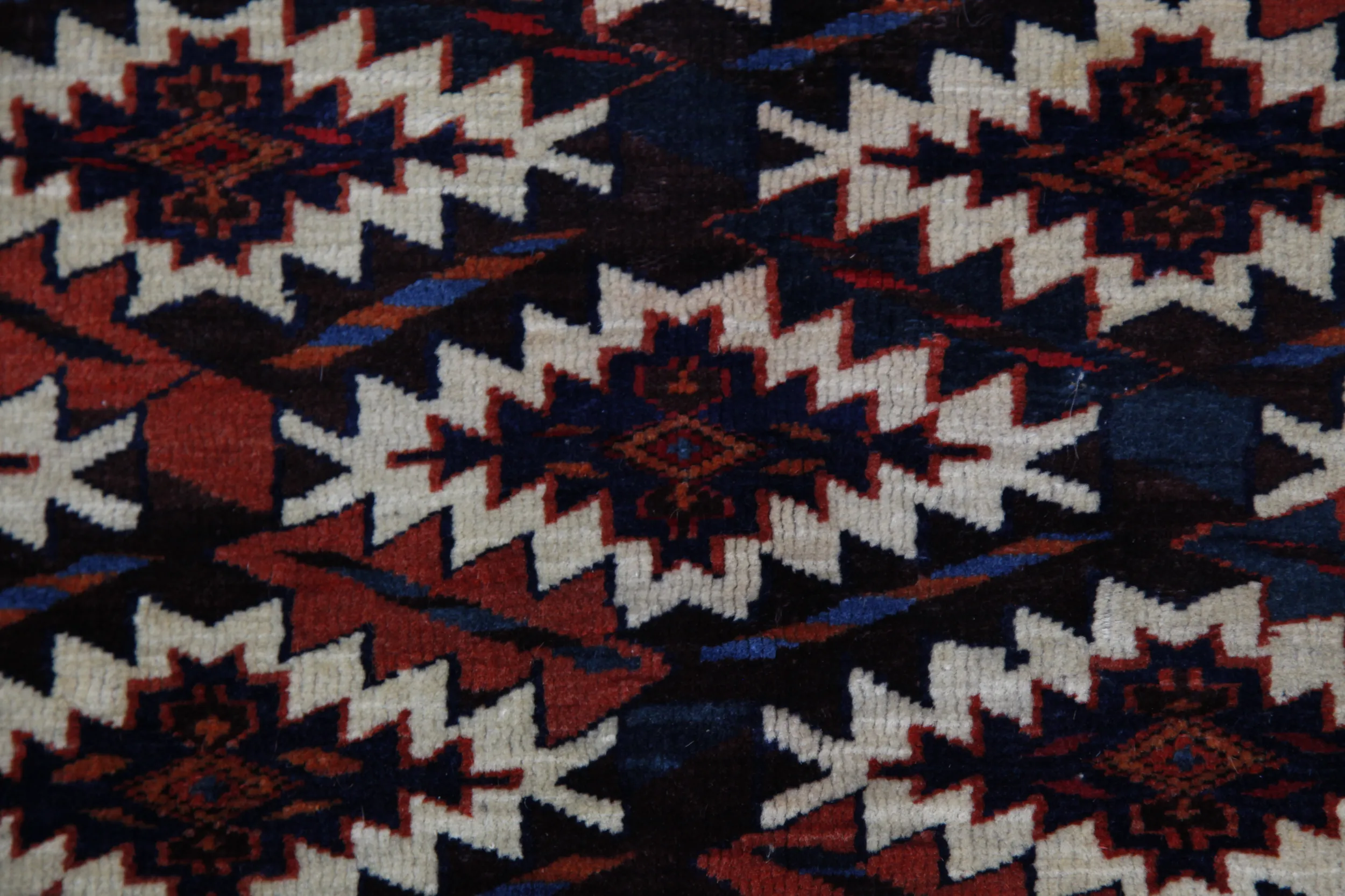GUEST: I was working for a college, and there was a woman I called on, a couple, who had collected over many years. And the husband died, and the wife was going to relocate into a retirement home. And I came to visit her one day, and she told me, "John, when are you going to come and get my rugs?" And I never remembered that she was going to give them to me. And I had an ethical dilemma, because I couldn't take them as a gift, so I made her an offer of $1,000 for about 18 Oriental rugs.
APPRAISER: Oh, my.
GUEST: Maybe ten of them are still under a spare room bed.
APPRAISER: Well, the piece you brought in today is a Turkmen piece called a Yomut. It's woven by the Yomut tribe, and the form is called an asmalyk. And it's a camel trapping. It's a piece that is made by a bride's family for the wedding procession. It's essentially a dowry piece. And it's woven in the late 19th century. Some of the qualities that make it an asmalyk, the main is the fact that it's coming to a point at the top, and the fact that it has these very decorative tassels at the bottom. And the colors in the tassels actually represent almost every color that is in the piece itself. There are many times when we find them without their tassels. The piece is from about 1870. It's still a period where they were using natural dyes. One color that we see in this rug that we don't normally see is this shade of red up here, which may be an insect dye which we called cochineal. And there are also some beautiful greens, blues, apricots. Basically, the range of color is quite nice for a piece like this.
GUEST: Mm-hmm.
APPRAISER: The quality is very fine, and if we look at the weave, it has a very densely packed amount of knots, so that you can see very few of the weft threads. You can see the design very clearly.
GUEST: How many per inch?
APPRAISER: I would say it would be approximately 200 knots per square inch, which for a tribal piece is very, very fine. The condition is extraordinary. This piece has a value of $5,000.
GUEST: Mm-hmm.
APPRAISER: And so that would be a realistic insurance replacement value for it. About 15 or 20 years ago, these were really hot, and this piece might have brought as much as $10,000.
GUEST: Mm-hmm.
APPRAISER: So they've actually backed off a little bit in value. So $5,000 is realistically what you would have to pay if you were a collector.
GUEST: I think that's wonderful. I just love what you're telling me.












